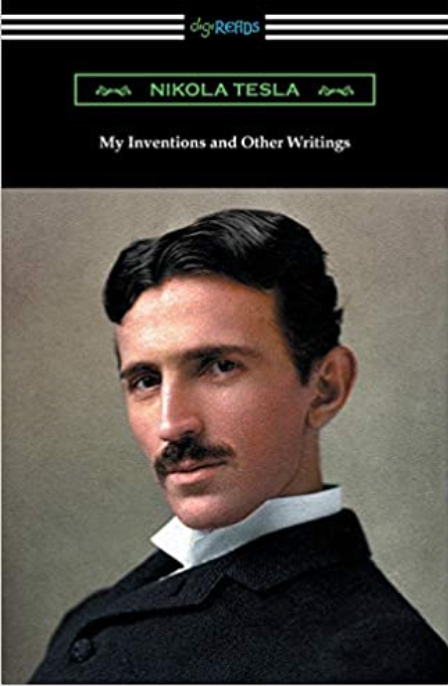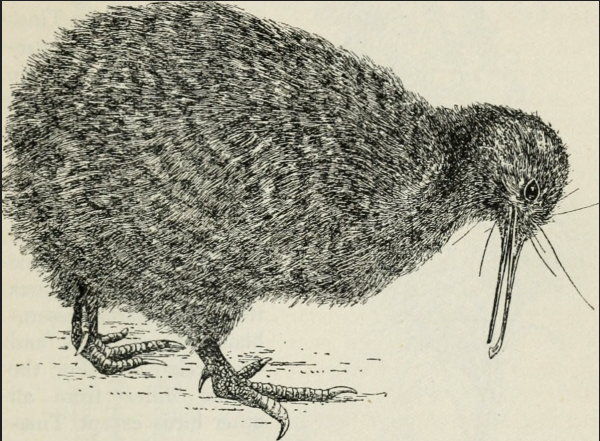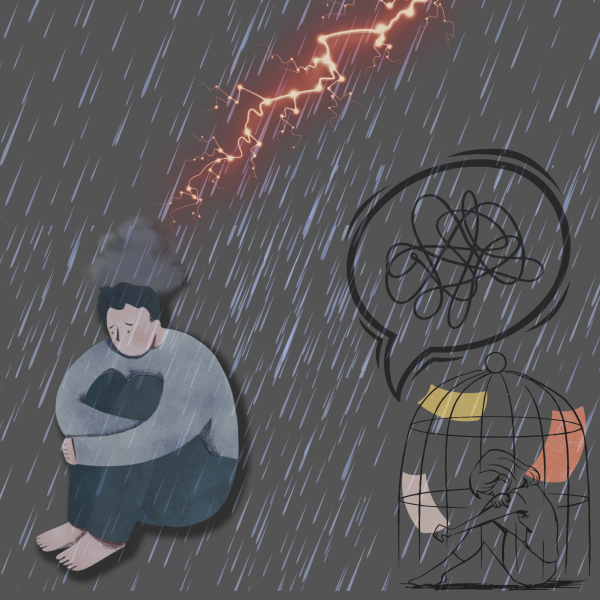The Mind and Machines of Nikola Tesla
My Inventions and Other Writings By Nikola Tesla
The brilliance of Tesla’s mind is also immaculately portrayed through his elegant form in writing. His uniquely humble and eloquent tone draws the reader in, and keeps their attention for the full length of the story.
Close your eyes and imagine an apple. It may be difficult, but see how clearly you can picture it. Are there leaves? Bruises? Once you have established a graphic, try to mentally project it into a three-dimensional space. Now, how heavy is it? How difficult is it to pierce? How high does it bounce if you throw it?
This scenario, which is most likely very difficult for the average person to vividly imagine, is how Nikola Tesla designed all of his best inventions. Tesla, the man who created the AC power system and shaped the 20th century as we know it today, was able to do this in his mind as easily as moving a muscle. His capability to do this and so much more inside his head provides just a small glimpse into the genius that he was, but fortunately, we don’t have to imagine everything. My Inventions and Other Writings, Tesla’s autobiography, provides a direct look into one of the brightest minds of the last few centuries.
As someone who has always had a fascination with psychology, reading Tesla’s portrayal of his own thoughts and ideas was particularly appealing to me. He explains his thought processes, how he conceives of his ideas, and how he was able to use only his mind to create a working model of something that had never existed before.
In a few instances, Tesla displays the inner workings of the mind which bore so many influential inventions. While explaining the process he uses to create something new, he describes how he can picture a working model of something he has never seen before in his mind, as if it were right in front of him: “When I get an idea I start at once building it up in my imagination. I change the construction, make improvements and operate the device in my mind. It is absolutely immaterial to me whether I run my turbine in thought or test it in my shop. I even note if it is out of balance. There is no difference whatever, the results are the same” (Tesla 11).
The brilliance of Tesla’s mind is also immaculately portrayed through his elegant form in writing. His uniquely humble and eloquent tone draws the reader in, and keeps their attention for the full length of the story. Throughout the narrative, Tesla’s writing style is that of someone who is well aware of his own intelligence, and unwilling to humble himself for the sake of his readers. However, he does not make it a point to brag about his genius; it just so happens that describing himself as a man with anything but staggering intellect would simply be denying the readers the truth.
Upon reading this narrative, it becomes clear that it is not expected of the reader to have an extensive background in the sciences that he discusses. Tesla’s story is much more focused on the psychological, social, and narrative aspects of his work than the technical, but this does not mean that there is any shortage of detailed descriptions of his inventions. However, I believe that it would have been helpful to have a visual representation of these inventions simply because of how complex they are in design; it’s very difficult to accurately describe something the reader may be completely unfamiliar with by just using words. It is too fascinating a concept to be sullied by the fact that the reader cannot visualize the subject as well as the author.
Whether you enjoy science, history, or are just looking for a story that will keep your interest the whole way through, there is something in this book that will resonate with you. Tesla has a way of writing which will hold the attention of even those with no interest in science whatsoever.
Tesla also reserves a significant portion of the story for social commentary. For example, he believed that his wireless communication system was the key to achieving world peace: “War can not be avoided until the physical cause for its recurrence is removed and this, in the last analysis, is the vast extent of the planet on which we live. Only thru annihilation of distance in every respect, as the conveyance of intelligence, transport of passengers and supplies and transmission of energy will conditions be brought about some day, insuring permanency of friendly relations” (Tesla 33).
For someone who was so reserved socially, Tesla was staggeringly insightful as to how technology and society would progress in the years following his death. His design of electric currents has revolutionized technology ever since it was created, which he was well aware would happen, but he had also predicted how they would be used. He described in great detail how people would communicate instantaneously, as if there was no space between them at all. With texting, phone calls, and video calls all available at the push of a button, it would seem that his predictions proved true.
Nikola Tesla has gone down in history as one of science’s greatest minds, which is clearly reflected in this story. I would emphatically recommend this book to those who are interested in psychology or the science of power and electricity, or anyone who simply wants a closer look into the life of the man who single-handedly shaped technology as we know it.











